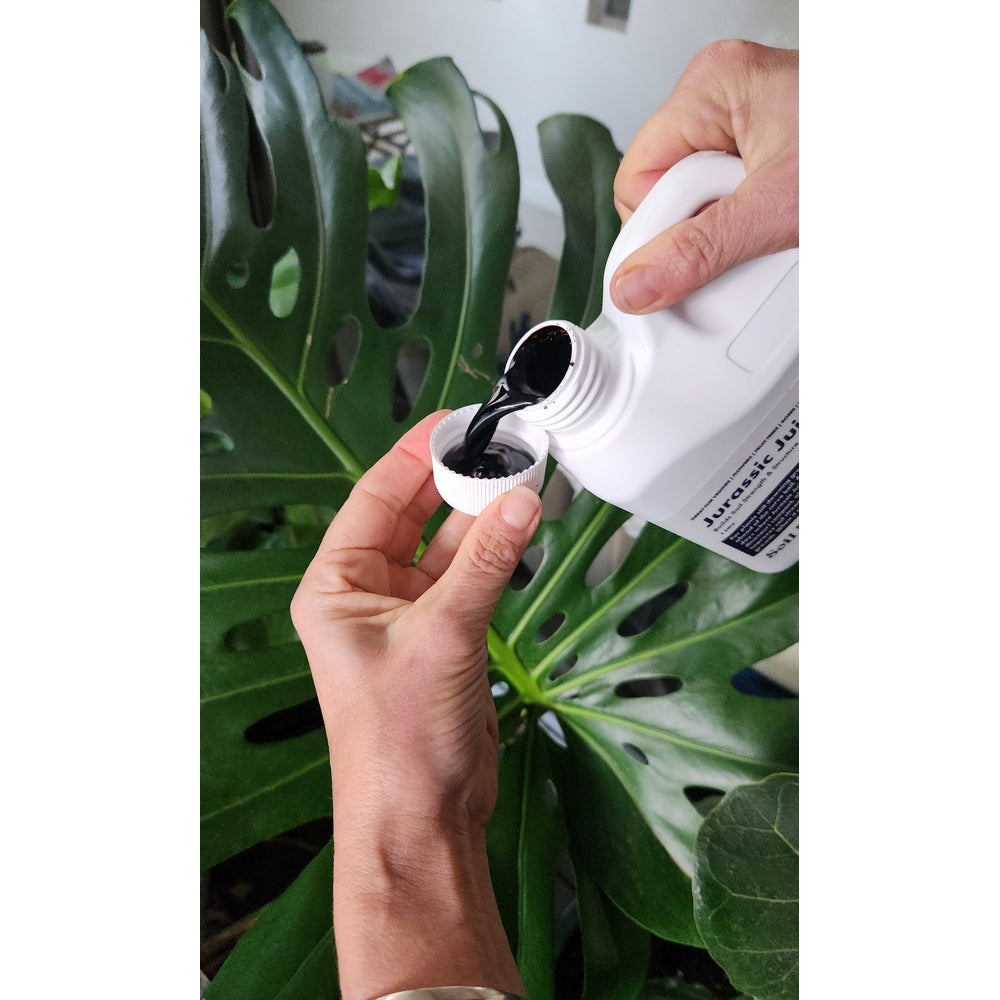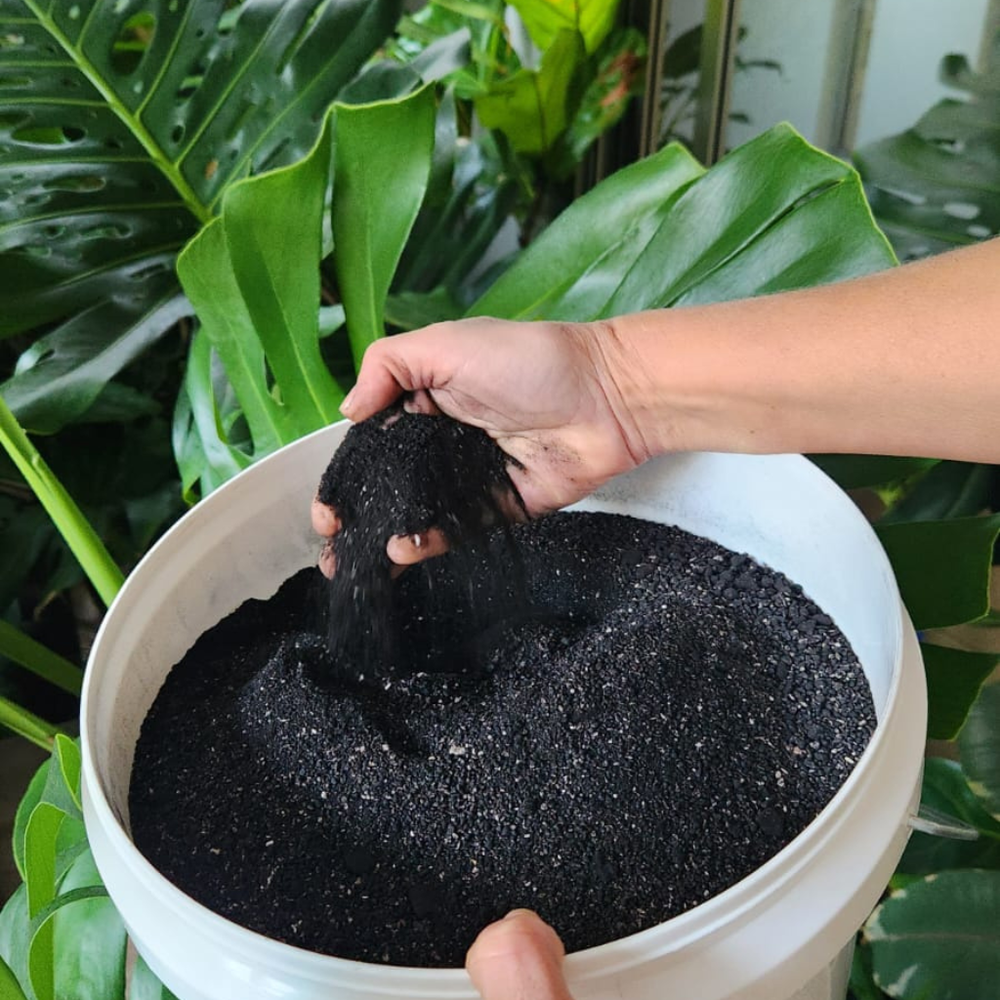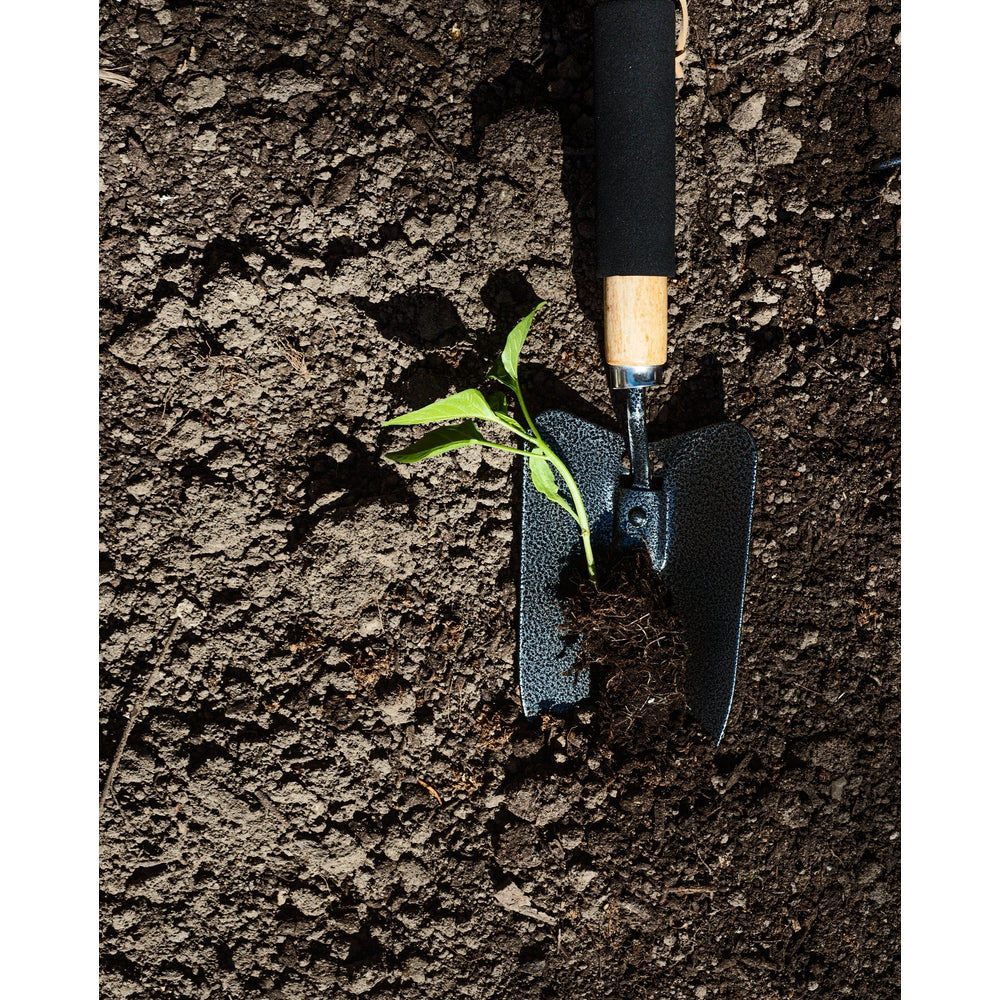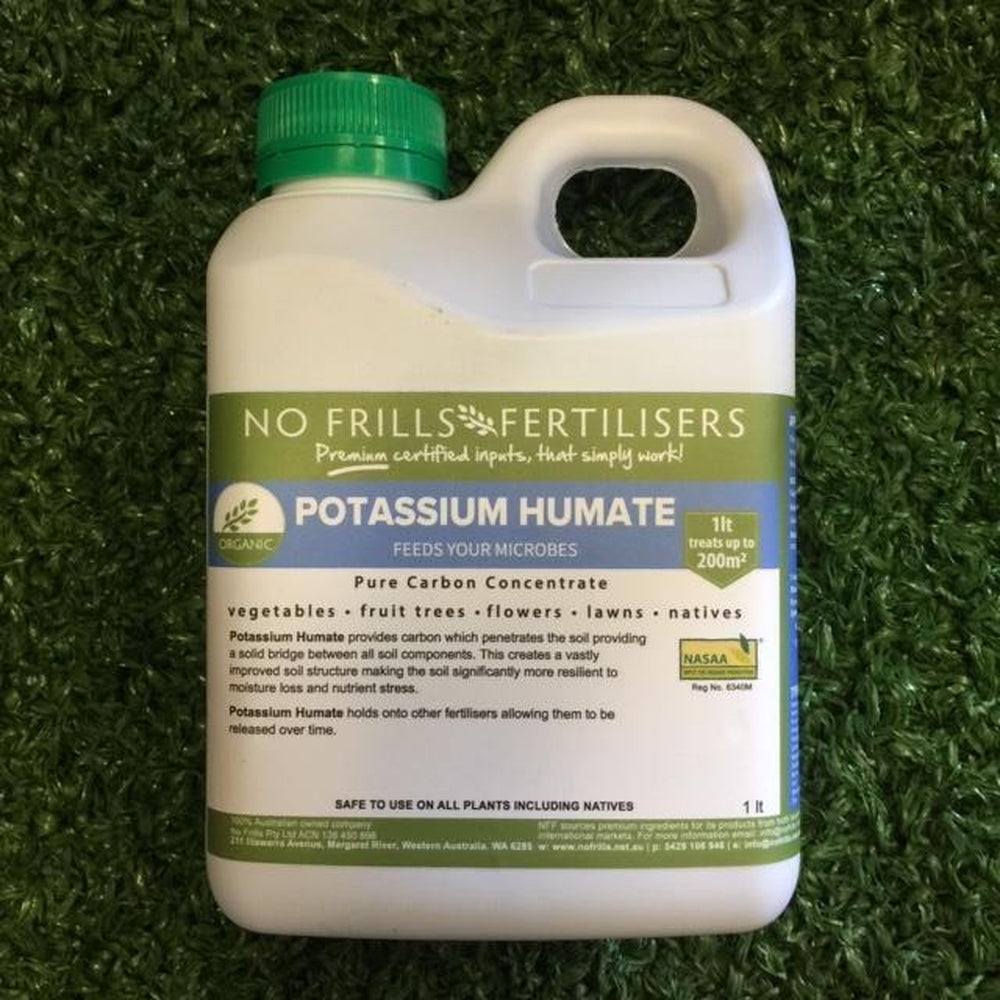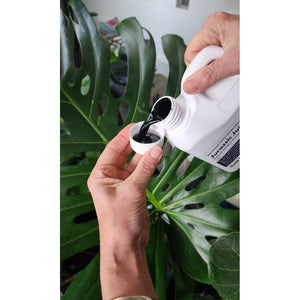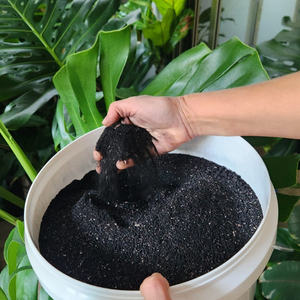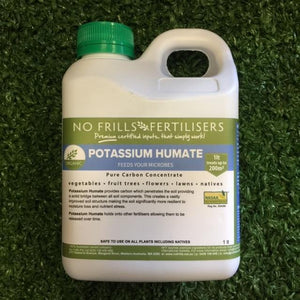Feed Microbes and Build Soil Structure!
No need to crank up the DeLorean; with Jurassic Juice, you can take your soil back to dino days! This powerful fertiliser concentrate helps boost moisture retention, unlocks nutrient treasure troves, and creates an optimal soil structure. It's like a full-course bush-tucker meal - infusing your soil with all it needs to keep producing harvests that are bigger and better than ever!
"Jurassic Juice" Potassium Humate Concentrate enables the creation of an enhanced soil structure, making it more resilient to dryness and nutrient shortages. It attracts and binds other fertilisers, releasing them gradually as required. With its 100% carbon content, it optimises microbial health in the soil. Furthermore, it is a great choice for hydrophobic soils, acting as a natural soil wetting agent as it is able to permeate sand particles and act like a magnet to the fertiliser.
Perfect for?
All soil types! It helps with non-wetting sand and opens tight clays.
What is Jurassic Juice and what does it do?
Jurassic Juice is natural organic humus extracted from ancient dinosaur compost. It combines with nutrients and minerals in the soil making them more available to plants when they need them. Soluble carbon acts as a catalyst for most soil processes and stimulates beneficial microbes.
Why does it work?
Jurassic Juice is natural organic humus that is full of carbon and gives life to soil.
What are the benefits of Jurassic Juice Natural Organic Humus?
- Improves soil structure.
- Adds humus to the soil and feeds microbes.
- It improves fertiliser efficiency and nutrient uptake.
How to Use Jurassic Juice:
Use Organic Jurassic Juice every month. Every other month apply Soil Dynamics Regenerate Elixir. Use in concert with Happy Gut Tonic and our Protein Shake on fortnightly rotations with of course our foundation Nutrient Rock Star to provide added soil and plant health benefits by offering a diverse range of different food sources. An important point to note here is that the area that one person’s watering can cover will differ from another person. Our application rates are based on one watering that can cover about 8-10 m2. The soil condition and stage of plant growth will also govern how much to use, but the key to using these organic concentrates is to ensure that:
- the plant leaves are covered to a point of runoff
- the soil area around the base of the plant has been showered
- always hose residue off well to prevent burning
Note: 1 level cap = 20ml. 1 standard watering can = 9 litres.
Soil Drench:
This is the most common way to use the product. Simply dilute into a watering can and apply to the plant leaves and soil surface.
Foliar Spray:
For optimal efficiency, some growers prefer to use handheld or backpack sprayers when applying products. To ensure a fine mist adequately covers leaf surfaces, dilute the product into a sprayer with water and spray until runoff is visible.
| PER 9 LT | SOIL DRENCH | FOLIAR SPRAY |
|---|---|---|
| Garden beds | 20-40ml | 25ml |
| Large trees | 50-100ml | 25ml |
| Stressed Tress | 100-200ml | 25ml |
| Container Pots | 10-20ml | 25ml |
| Lawns | 50-100ml | 25ml |
| Natives | 5-10ml | 25ml |
| General | 20-40ml | 25ml |
More Details (aka nerd out):
Soil Dynamics "Jurassic Juice" is a concentrated liquid solution of soluble carbon materials that is extracted from an ancient form of compost known as humates.
The carbon in these materials has undergone a transformation that produces unique molecules of carbon that can integrate and react with small particles to perform a number of different functions in sandy and clay soils.
In sandy soils the humate materials have the ability to penetrate deep into the soil profile coating individual sand grains that can have a remarkable effect on non wetting conditions in these soils.
In clay soils the humate materials have charged particles on them that react with the charged particles on clay in the soil which can have the effect of loosening up a compacted clay soil.
These particles also react with mineral nutrients already present in the soil from applied fertilisers making these nutrients immobile so that they are not leached and create a slow release effect.
Humate materials also act as an energy source for microbes in the soil and result in bio stimulant properties.
Even more details:
Humates can be defined as the salts or concentrated form of these humic acids (in turn, fulvates are referred to as the concentrates or salts of fulvic acids).
Humic substances play a vital role in plant nutrition and soil fertility, and are now recognised by many soil scientists as the single most productive input in sustainable agriculture.
As a material, humic substances are natural products that are formed following the biological and chemical breakdown of organic matter over an extended period of time (thousands of years), whereby humus is separated from non-humic substances (such as carbohydrates, fats, proteins and amino acids) by natural decomposition within the soil.
As a material, these humic substances are the most chemically active compounds in soils, with cation and anion exchange capacities far exceeding those found within clay.
These humic substances consist primarily of three major fractions including humic and fulvic acids, and raw humin (prehistoric plant and animal matter). With these three subdivisions based on the solubility of each of these fractions in water adjusted to different pH levels
Fulvic Acid: soluble at any pH, smallest molecular weight, dominant in Oxygen
Humic Acid: soluble at pH > 7 medium molecular weight, balance in Oxygen and Carbon
Humin: insoluble at any pH, largest molecular weight, dominant in Carbon
These three components which make up humic substances (humin, humic acid, and fulvic acid) each play a different role in providing benefits to plants grown within the soil medium.
Humin
Of these three fractions, humin has the highest molecular weight (and thus plants respond to it slower). As the humate composition of any humic substance is specific to the substances geographic location, origin material, and degree of decomposition, there can be a large variability in the molecular composition of this humin fraction.
Nonetheless, in general humins are not soluble in water at any pH, are macro-organic and are very resistant to decomposition. However, humins also perform many functions within soils themselves, improving the soils structure, water holding capacity, stability, and soil fertility (including its cation exchange capacity).
Humic acids
Humic acid is a larger more complex molecule than its fulvic acid counterpart, with its main benefits being those it imparts on the soil physical structure. These benefits include increasing the cation exchange capacity, improving soil structure, and its inherent ability to hold up to 16 times more minerals than clay.
Alongside this, humic acids can complex with elements such as nitrogen (making it less volatile and prone to leaching), phosphorus, zinc and calcium, and can also release potassium via penetrating between clay particles and making it more available for plants. Humic acids have also been noted to readily form salts and bind with inorganic trace mineral elements (over 60 different minerals) in a form that is readily available for uptake by various organisms. Furthermore, these humic acids have also been utilised in the past to stimulate microorganisms, and clean up toxic soils (including soils with high levels of pesticides and heavy metals).
Fulvic acids
Fulvic acids are the smallest molecules of the three main fractions which make up humic substances and are soluble in water at all pH conditions. As a molecule its presence has many important benefits to plants (as fulvic acids are involved in chemical reactions in the soil that influence plant metabolic processes).
These include its ability to promote cell growth (similar to the effects of auxins), stimulate oxygen uptake improving drought and heat tolerance (as its oxygen content is twice that of humic acids), and immobilise minerals within plants themselves including iron, magnesium and calcium.
It is also highly chemically reactive, with their exchange capacity found to be twice that of humic acids. Also, due to their relatively small size, fulvic acids are able to readily enter plant roots, stems and leaves, making it ideal as a foliar spray when used as a primary production technique for maximising plant productivity. These fulvic acids are thus able to carry these trace minerals directly into tissues and metabolic sites. Alongside this, fulvic acids are also the most effective carbon containing chelating compound known, and are also non toxic at low concentrations.


